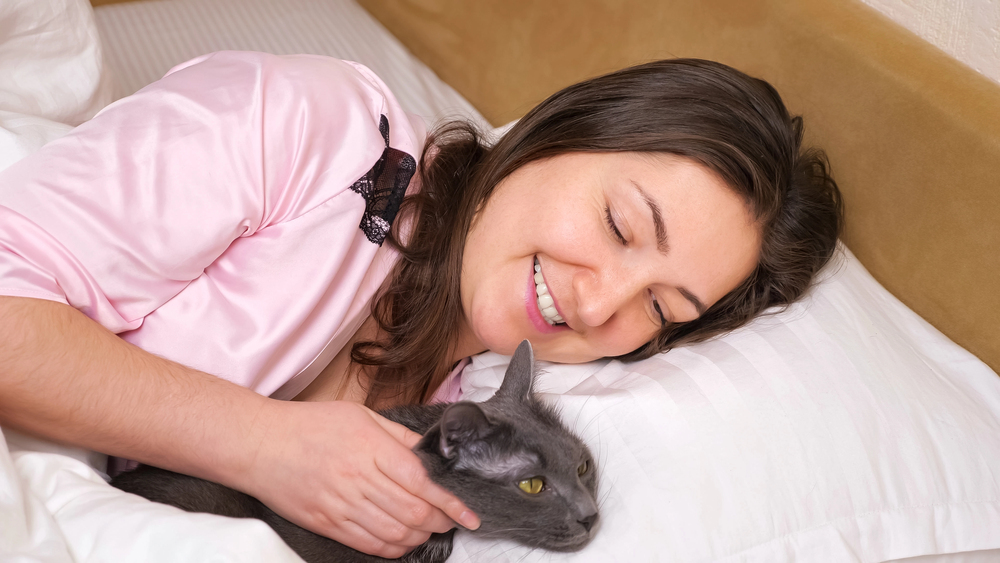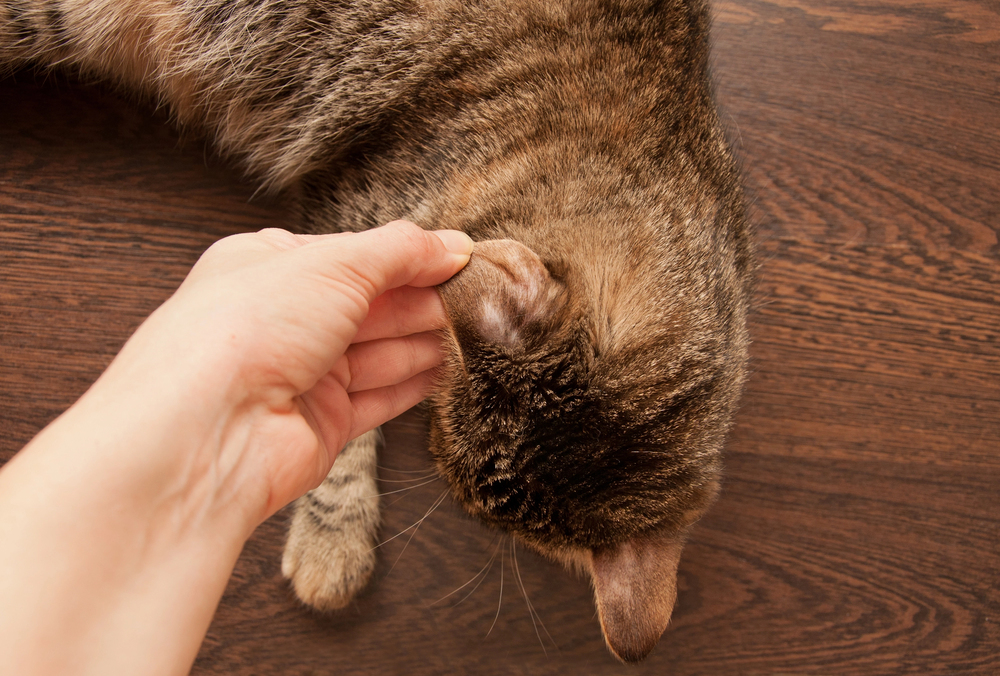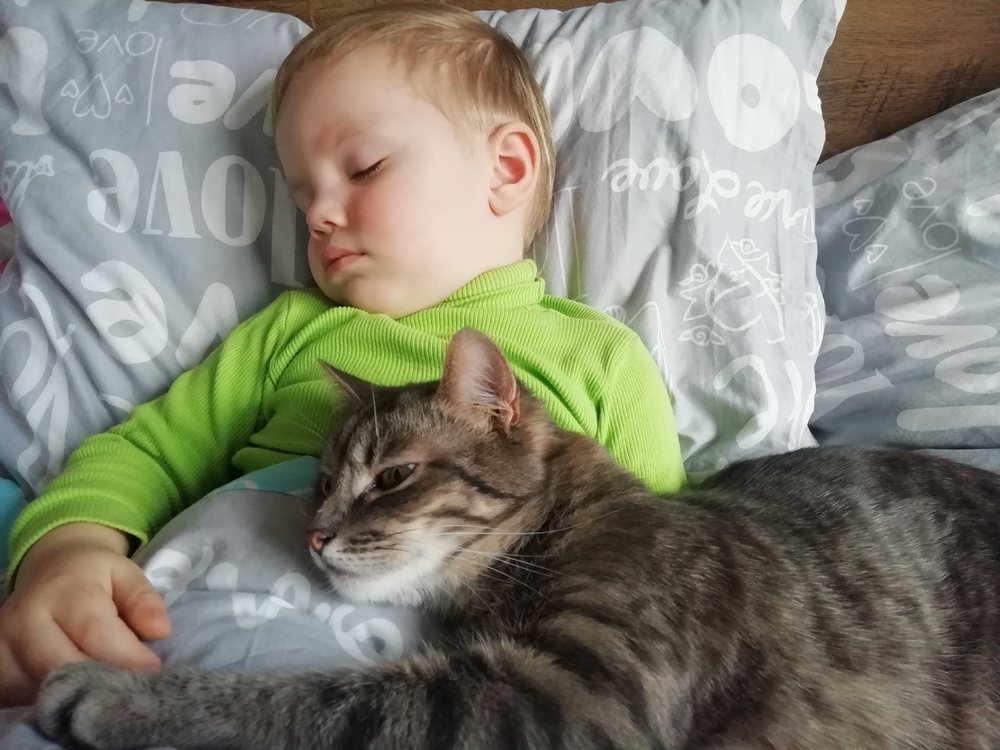
It’s a snapshot moment: a purring cat snuggled up next to you, the gentle cadence of their breathing sending you into slumber. But beneath the warm smile is a combination of science, health tidbits, and a few eye-aising risks that any feline fan should be aware of.
For others, sleeping with a furry friend is the ultimate display of love and trust. But sleep experts and veterinarians say this after-hours activity can do more than disrupt your REM cycles it can impact your immune system, allergies, and even your pet’s safety. The silver lining? With the right precautions, the cuddles are possible without harming your health.
Here’s what the experts have to say about the real ins and outs of letting your cat get into bed with you and how to make it happen if you just can’t help yourself.

1. Midnight Zoomies Can Wreck Your Sleep
Cats sleep up to 15 hours daily, but don’t tend to keep our clocks. Some cats are nocturnally active and sensitive, says Geoff DeWire, DVM. This means late-night runs, furniture surfing, or gentle (but persistent) swipes of the paw across your face. Over time, these intrusions disrupt your sleep, leaving you feeling groggy and less alert the next day.
And it’s not only the zoomies snoring, scratching, or changing positions can also rouse you. Sleep medicine specialist Nancy Foldvary-Schaefer, DO, MS, cautions that constant awakenings due to a pet’s activity can lead to chronic sleep deprivation, which is associated with mood swings, compromised immunity, and even cardiovascular problems.

2. Allergies and Asthma Can Exacerbate During the Night
If you have an allergy to cats or asthma, night can become a high-risk zone. Cat allergens cling to fur and drift through the air on small particles. Up to 40% of children with asthma may react to exposure to cats, according to the American Academy of Paediatrics, and there is no such creature as a hypoallergenic cat.

Keeping your bedroom cat-free is the optimal symptom-reducing practice, but if that isn’t feasible, HEPA air purifiers, frequent vacuuming, and hot water washing of bed linen every week are recommended by professionals. As Dr. DeWire explains, “If you have known allergies, you should avoid letting your cat in your bed.”

3. Fleas, Ticks, and Other Unwanted Guests
Sleeping with a cat also involves sleeping with parasites. Outdoor cats will be more apt to bring fleas, ticks, or intestinal worms into bed, but even housecats can pick up pests. Fleas won’t live on people, but their bites cause itching welts, and ticks can transmit severe diseases.
The CDC points out that fleas can also harbor bacteria such as Bartonella henselae, which causes cat scratch disease. The solution? Year-round flea and tick prevention, keeping your cat well-groomed, and indoor time for your cat as much as possible. Dr. DeWire recommends speaking with your vet about preventive measures to safeguard your pet and your home.

4. Zoonotic Diseases Are Rare But Real
Zoonotic disease illnesses that are transmissible from animals to humans are more common than one realizes. The CDC estimates that over 6 in 10 infectious human diseases are transmissible from animals. For cats, ringworm, salmonellosis, toxoplasmosis, and rabies are some of them.
Even though the healthy adult is at low risk, the others with weak immune systems, infants, and pregnant women must take extra precautions. Prevention is simple in the guise of hand washing following contact with your cat, current vaccinations, and avoidance if you or your cat has an illness.

5. Safety Issues for Infants and Young Children
That old fable about cats “taking away a baby’s breath” is precisely that a fable but there is a genuine potential for suffocation if a cat tends to curl itself too tightly around a baby’s face. Cribs are especially tempting for cats because they’re close at hand, up high, and warm.
Experts recommend that cats be kept out of babies’ bedrooms. Older children are the greatest dangers of allergy attacks and bites or scratches if they wake up a pet during the night. The Schwarzman Animal Medical Center reminds us that children are the most common victims of dog and cat bites, oftentimes from not noticing subtle suggestions of annoyance.

6. Your Cat’s Safety Matters Too
It’s not just humans in jeopardy co-sleeping can injure cats as well. Rolling onto a kitten or small cat can suffocate or cause breaks. High beds are also risky, especially for cats with joint disease or those breeds likely to suffer from spinal conditions such as Intervertebral Disc Disease.
Vets advise pet ramps or stairs for older or high-risk cats, and strictly not sleeping with very young kittens. As AMC’s Dr. Ann Hohenhaus advises, “A brand-new puppy or kitten is just as fragile you might roll onto the little creature and squish or smother it.”

7. The Emotional Upside Is Real
Despite the risk, most cat owners would not give up the sense of a purring, warm body sleeping beside them at night. Research verifies that pet contact boosts oxytocin, lowers cortisol, and even calms emotions. For others, it means fewer nights lying awake and worried and more connection with their feline companion.
n fact, over 56% of people report sleeping with a pet in their bedroom, and many say it improves their sense of security. If you’re healthy, allergy-free, and your cat sleeps soundly, the emotional benefits may outweigh the downsides, especially with a few smart precautions.

Having your cat sleep with you is a matter of personal choice that combines love with common sense about body health. Knowing the potential danger, including sleep disturbances and parasites and acting in advance, you can decide what is good for you and the cat. To others, the snuggling and purring are worth the extra effort to provide a safe and restful bedtime.


